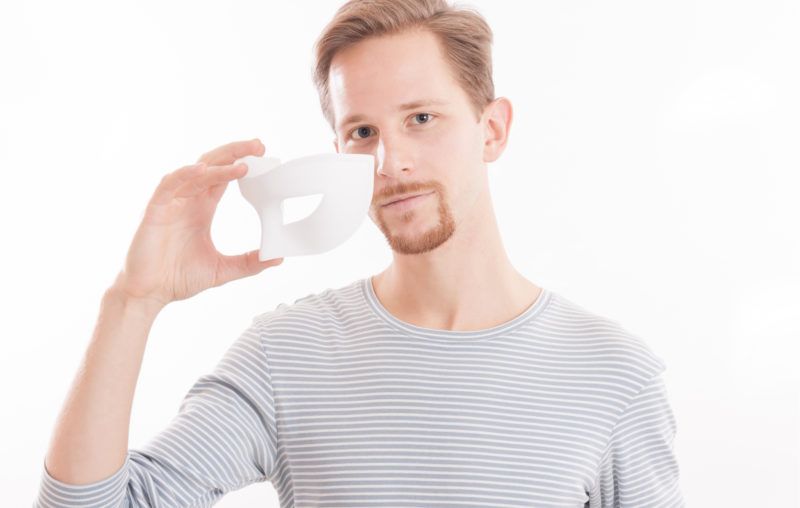The Slow, Strange, and Wonderful Unmasking of America

Early in the evening of July 1, I found myself intently staring out of the street-facing front window of my AirBnb in Burlington, VT. I was in a residential neighborhood, just a few blocks from where Burlington’s downtown commercial district starts–a place that would look familiar to anyone who has spent time in a small city that’s home to a large university. Having just arrived in town, I needed something to eat, and was planning to walk downtown and see what was open in the version of COVID-19 limbo specific to this time and place.
The people-watching had everything to do with the disposable piece of white cloth and two elastic bands I almost unconsciously fiddled with in my left hand. I was gaining a sense of whether people were wearing masks outside, and thus what to do with my own. Results were decidedly mixed.
I briefly smiled about the fact–and really it should come as no surprise–that libertarians have had internal debates on whether we should wear masks. We tend to think in theoretical absolutes, built on a foundation of right and wrong. Dear friends of mine have argued both sides, and while I tend to be less interested in these broad-stroke issues than the average libertarian, they still hold sway over my thoughts far more than, say, the average human being.
How We Got In This Mess is important to understand, and that includes the relationship of mask-wearing to health benefits real or imagined, government dictate, media sensationalism, and personal choice. But, shocking though this may be to some, libertarians are real people, all of whom have to leave the house at some point. Even the most militant in the online pro- and anti-mask camps have likely both worn them in public and at times forgotten them at home.
My traveler’s uncertainty came from two main sources. First, at the time of this writing, Vermont is among the quietest states with respect to COVID-19, a stark contrast to some other regions of the country experiencing greater activity and CNN.com headlines with font sizes that only seem to grow by the day. There’s reason to think fewer people will be wearing masks here than many places.
Second, I live in a rural area where one primarily gets into a car, drives somewhere, and then puts on a mask before entering a place of business. To be sure, peoples’ adherence, my own included, ebbs and flows for many reasons. But I’ve spent almost no time during the pandemic in even a small urban downtown, where a sizable number of strangers pass each other on city streets.
These two factors, it turns out, result in a set of subtle social phenomena that captivated me for the next thirty minutes or so as I strolled downtown in search of dinner. Based on my limited observation, I decided to split the difference, putting the mask on but not pulling it up over my mouth and nose. At first blush this seemed almost idiotic–in terms of virus transmission I was a sitting duck or worse yet a public health menace with a stupid piece of cloth hanging on my chin.
As old houses quickly turned to mostly-open businesses it was clear I correctly read the situation, at least in terms of imitating the people around me. The vast majority of people out and about had masks somewhere visible on them, but only the smallest minority wore them fully over nose and mouth. Many had either disposable masks like mine or bandanas around their necks, or pulled up just a bit more. Virtually all, myself included, were fiddling with them in ways that likely more than canceled out any epidemiological usefulness they might have had to begin with.
I spent the first few minutes of my journey in smug condemnation of how silly this all was and by extension the somewhat tragic meaning it had for our society in a time of crisis–the masses having any semblance of rational thought stomped out by government, experts, media hysteria, and the like. But as I became more directly aware of all the fiddling I was doing with my own mask, I realized I had it all almost completely wrong. I was witnessing individual freedom in a modern complex society at its best, not its worst.
The key observation was that all my unconscious mask-fiddling was in response to the people I passed–how close they were, what they were doing with their own masks, how comfortable they did or didn’t look as they saw me. And of course, they were all doing the same thing in response to me and everyone else. Everyone was pulling their masks a little bit up, perhaps just over the mouth, letting them slide a little back down. And we were all intently watching each other and responding.
The only time I put my mask fully on was upon entering a small takeout sandwich shop, prominently displaying a sign in the door that they “preferred” their customers wear masks. Looking into the crowded hot kitchen it was clear such preference did not extend to the individual workers, masks nowhere in sight. I thought I saw the two unmasked young women at a table outside give me a funny look. I pulled my mask back down to my chin. Another customer entered, fully masked, and I once again received a real or imagined funny look. The mask went up again, albeit not quite fully. It was all a little uncomfortable, though only a little.
This is how a complex society composed of individuals stumbles its way back to normalcy after a few months that I think everyone across the political spectrum would describe as straight-up weird. How we got here, whether the society-wide presumption of mask-wearing was borne more out of tyranny or choice, good science or mass hysteria, is hugely important in general. But all of that matters very little for how we will get out of it.
The overturning of laws and mass displays of civil disobedience will play only supporting roles to knowledge gained and exchanged painfully slowly between people. The theoreticians and philosophers are asking important questions, but I urge them not to miss this deeply libertarian phenomenon analogous to so many market processes and free exchanges of ideas that slowly right society’s ship without a captain.
The situation likely looks very different in denser cities and parts of the country with more new virus cases. It could all change here in Burlington quite quickly. But that’s the whole point of de-collectivizing these decisions and letting them play out as people watch and learn from each other in a manner consistent with what Adam Smith described in The Theory of Moral Sentiments. Once size rarely fits all.
Later that evening I walked the much shorter half block to a local convenience store. Out the door I realized I had forgotten my mask entirely. Turning around to get it felt like a bridge too far–I walked into the store and purchased an ice cream sandwich, incident free.
Walking back I passed a fully-masked man walking a dog. I automatically took an extra step away from him. As we passed he fiddled with and adjusted his mask, likely without conscious thought, noticing the disparity. Back inside I put my cheap disposable piece of cloth with elastic bands on a hook by the front door so I wouldn’t forget again, and snapped a picture on my phone, an odd keepsake of how I spent my 2020 summer vacation.












